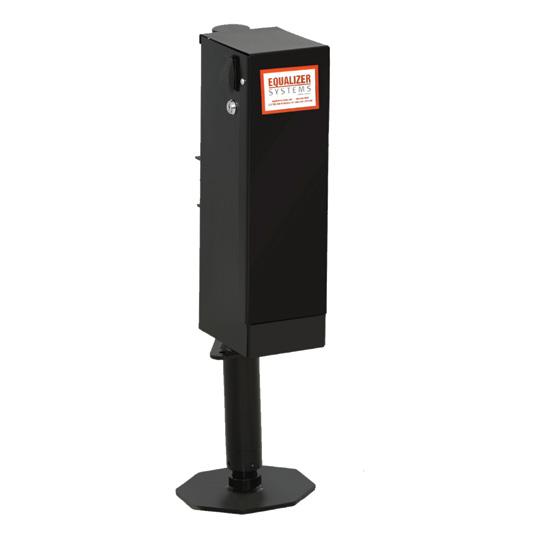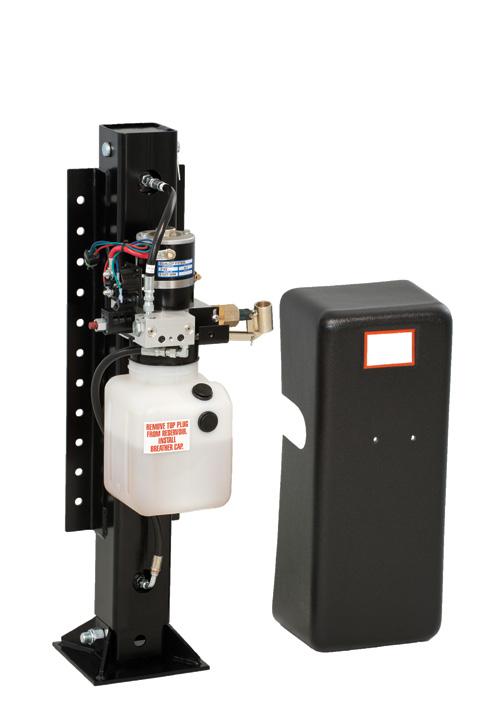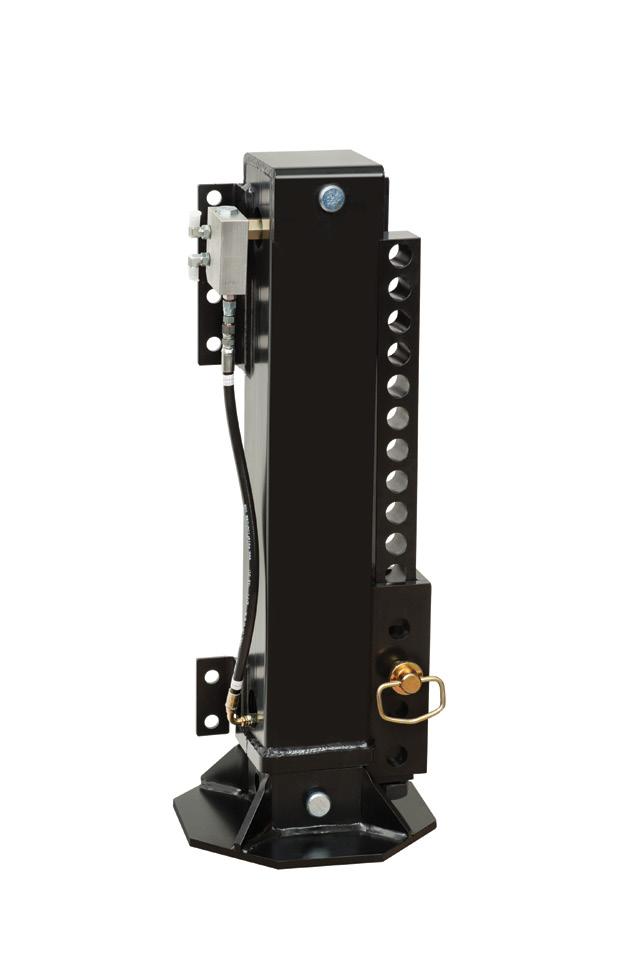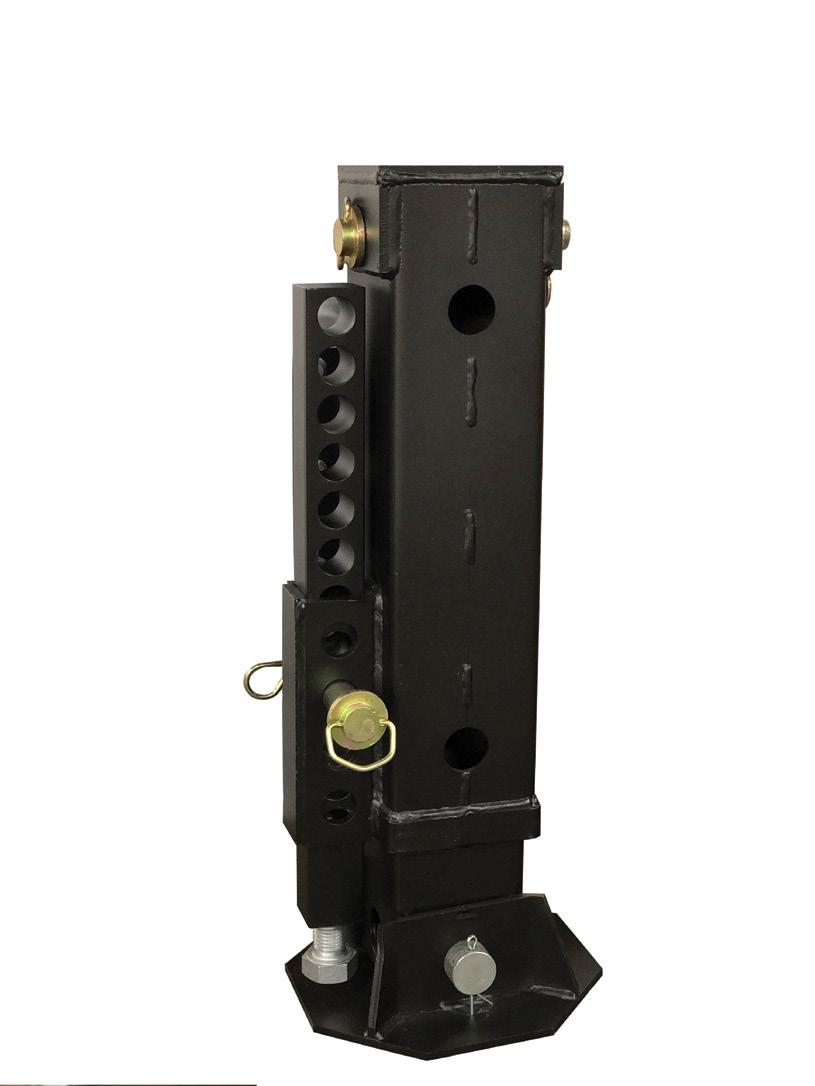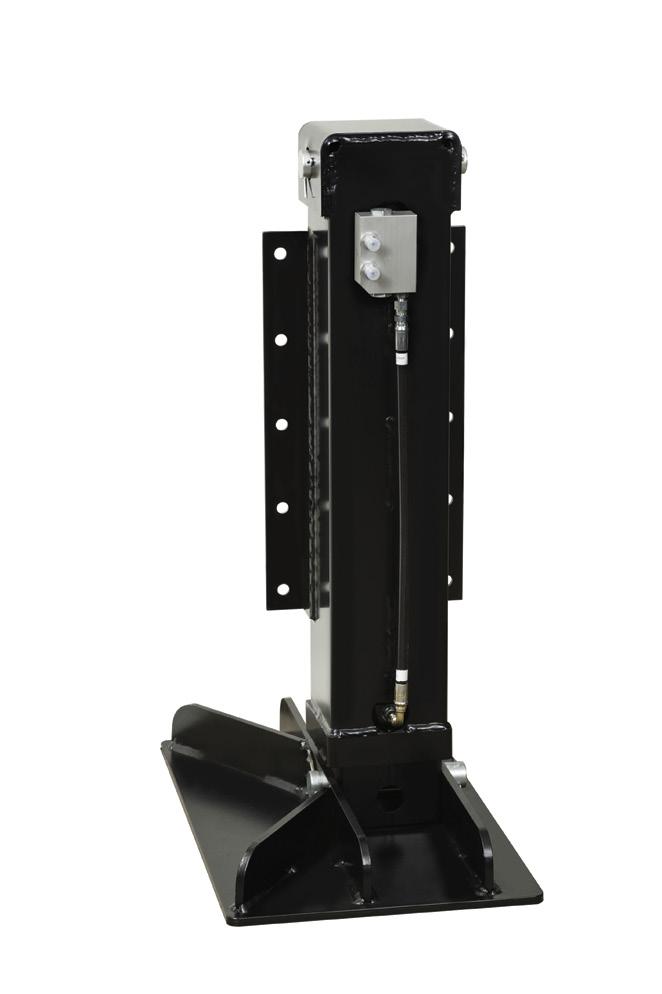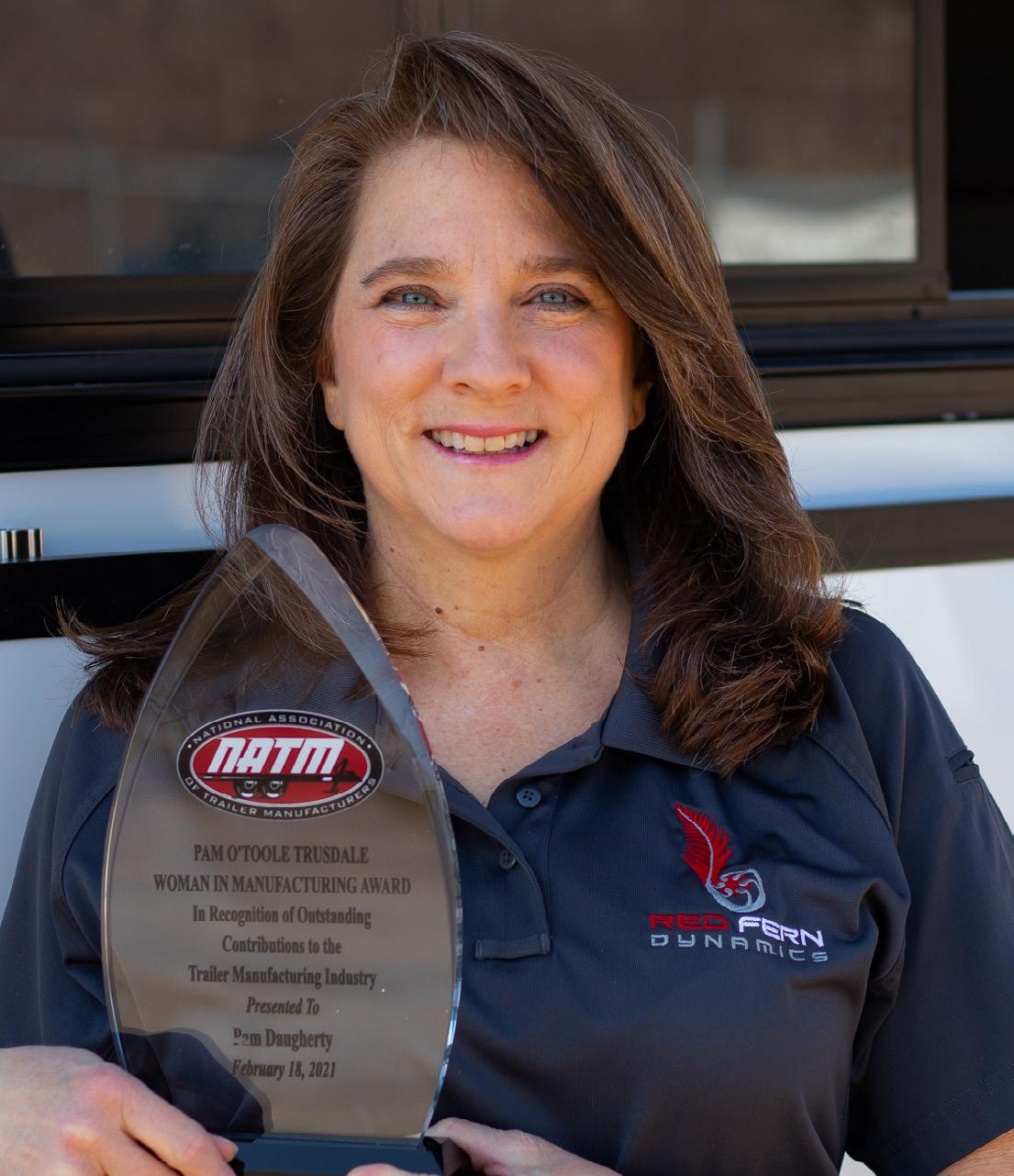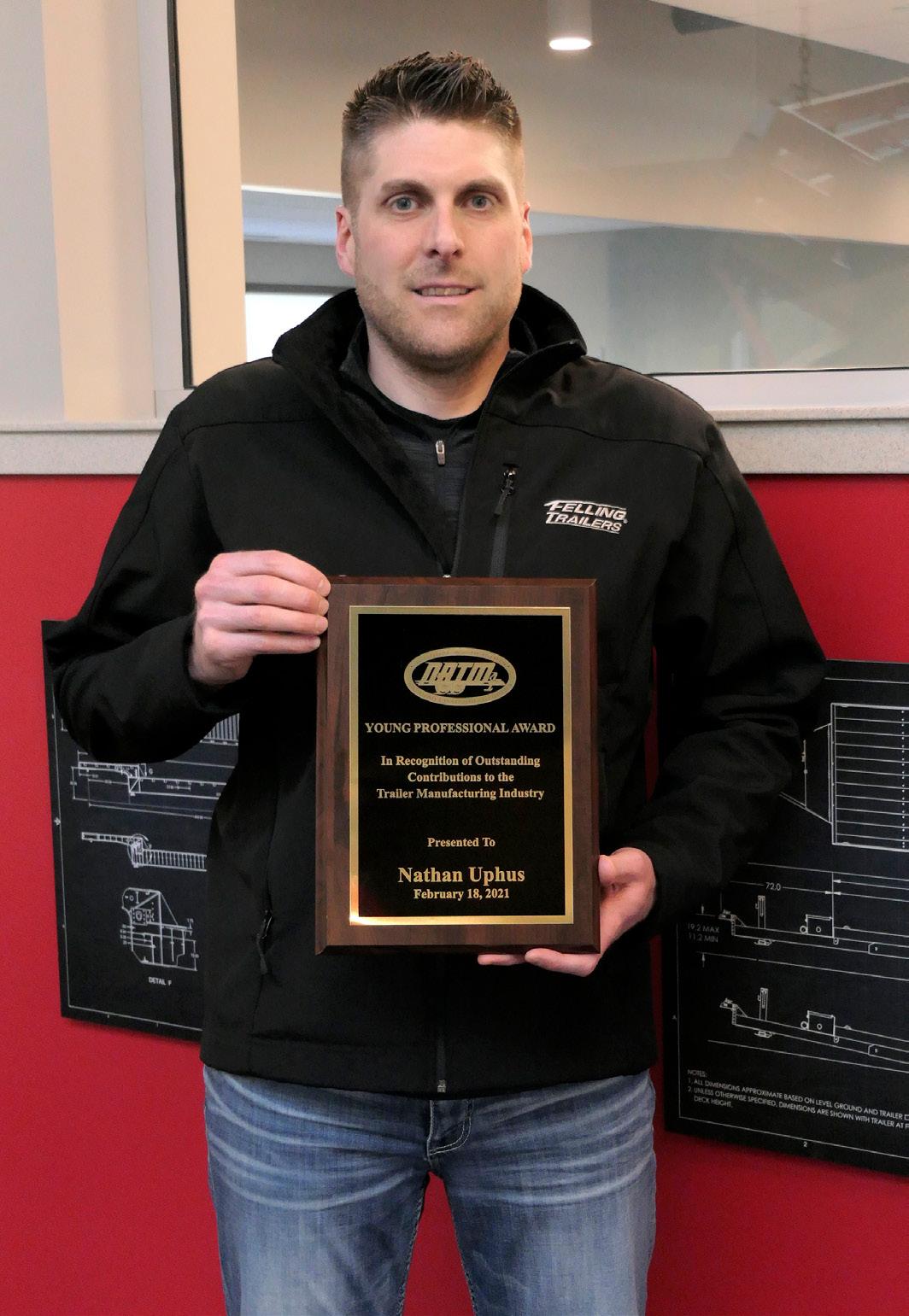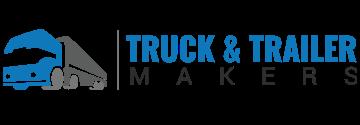
5 minute read
Readying Trailers for Spring
By NATM Staff
It’s time to get trailers ready for warmer weather! After a long winter sitting unused, make sure the trailer is safe before hitting the road. Below are recommendations for readying trailers for use. For more information about safe trailering and proper maintenance, visit www.TrailerSafetyWeek.com.
Tires Wheel Bearings
Check wheel bearings before returning the trailer to regular use and be sure to replace according to the trailer manufacturer’s recommendations. Have the bearings serviced, which requires a repack, new grease, a new bearing, and a new bearing race. Refer to the owner’s manual for maintenance information.
Check the tires on both the trailer and tow vehicle, looking for damage after long winter months. Make sure to inspect the tread for uneven wear. Verify that tire pressure is correct, and don’t forget the spare tire. Proper tire pressure affects vehicle handling and safety. The correct tire pressure for the tow vehicle is in the owner’s manual or on the tire information placard. Underinflation reduces the load-carrying capacity of your tow vehicle or trailer, may cause sway and control problems, and may result in overheating, causing blowouts, or other tire failures. Overinflation causes premature tire wear and affects the handling characteristics of the tow vehicle or trailer.
Lug Nuts
Inspect all wheel lug nuts and make sure they are tightened to specifications.
Undercarriage
Inspect the springs, spring bushings, and hangers for wear and cracks. This kind of preventative maintenance can save the trailer from a dangerous and expensive breakdown on the road.
Wiring and Lights
Make sure connector-plug prongs and receptacles, light bulb sockets, wire splices, and ground connections are clean and shielded from moisture. Lightly coat all electrical terminal connections with nonconducting (dielectric) light waterproof grease. Make sure all running lights, brake lights, turn signals, and hazard lights are working. Verify the wiring is connected correctly, not dragging on the road but loose enough to make turns without disconnecting or damaging the wires.
Chains
Verify that the trailer has two safety chains, and when hooking it to the towing vehicle, cross the chains, so if the hitch comes loose, the crossed chains will catch the hitch.
Dust Caps
Make sure dust caps are still in place and have not cracked or otherwise been destroyed. Replace if necessary.
Brakes
Verify the brakes on the tow vehicle and trailer are operating correctly. Regularly have the brakes on both the trailer and tow vehicle inspected. Be sure the necessary adjustments are made, and any damaged or worn parts are replaced. Check to see how much brake pad material remains. The start of the warmer months is a good time to replace them if they are getting close to the end of their life expectancy.
Breakaway System
Ensure the breakaway system lanyard is connected to the tow vehicle but not to the safety chains or ball mount.
Hitch, Coupler, Draw Bar
Make sure the hitch, coupler, draw bar, and other equipment that connect the trailer and the tow vehicle are properly secured and adjusted. Check the nuts, bolts, and other fasteners to ensure the hitch remains secured to the tow vehicle, and the coupler remains secured to the trailer. Lubricate the connection point if necessary, to permit free movement of the coupler to the hitch ball. Inspect the coupler ball socket to ensure it is not bent or dented. Any indentions could cause the ball not to seat properly, which can lead to detaching from the trailer.
Cargo
If the trailer is loaded, check that all items are securely fastened on and in the trailer. Check load distribution to make sure the tow vehicle and trailer are properly balanced front to back and side to side.
Be sure the trailer jack, tongue support, and any attached stabilizers are raised and locked in place. Put all jack stands up, and do not forget to bring the wheel chocks.
Tow Vehicle Maintenance
Tow vehicles have frequent maintenance requirements. Spring is a good time to change the oil in the engine and transmission, lubricate components, inspect brakes, inspect belts and hoses, top off fluids to their recommended levels, check the radiator and cooling system, inspect the battery, and check the air conditioning system.
Tow Vehicle Mirrors
Inspect tow vehicle mirrors for damage and cleanliness to make sure there is good visibility.
Tow Vehicle Tools, PPE, and Accessories
Make sure to have a jack and lug wrench secured in the tow vehicle that is the appropriate size for the tow vehicle and trailer lug nuts. Verify the jack packed up is suitable for both the vehicle and trailer capacities. Pack work gloves, safety glasses, and a mat or blanket in case there is a need to complete maintenance procedures or change a tire. Make sure all the tools are functioning correctly before packing.
Route Planning
Plan ahead and determine the route by checking for restrictions, bridges, tunnels, and avoidable construction zones.
Flooring, Body, Fenders, Cargo Securement Attachments, and General Trailer Structure
Inspect trailer flooring for chips, cracks, and excessive wear. Make sure body panels and fenders are secure and in normal functioning order. Visually inspect the trailer structure to make sure nothing has rusted out or worn out during the harsh winter months. Replace or secure parts if necessary.
Welds
Give the trailer a once over visual inspection for cracked welds. Welds often break, especially when trailers are regularly subjected to heavy loads. Inspect carefully, as even hairline cracks can escalate quickly to much larger problems. Pay special attention to the stress points of the trailer when inspecting. In particular, check where the tongue attaches to the trailer and the points where the spring hangers are welded to the trailer frame. Make sure the ramps are secured to the trailer, and whatever pin or locking device that holds the ramps in place is still in its proper location and functioning. Verify the tailgate is secure but still allows for free movement. Lubricate hinges and other components if necessary.
Trailers with Dump Bodies and Hoists
Check all fluid levels, hydraulic hoses, and the hoist unit. Clean and inspect the power unit for the hoist. Check electrical wires and battery corrosion for wear. Apply grease to hoist grease fittings, or zerks, as needed. Replace parts if necessary.
For more information about proper trailer maintenance, refer to your trailer’s owner’s manual. Trailer safety resources are also available and free to use at www.TrailerSafetyWeek.com.
Vin-eze
A Division of PMCS, Inc. Easy to use VIN Software
Source for software, labels and Certificate of Origin
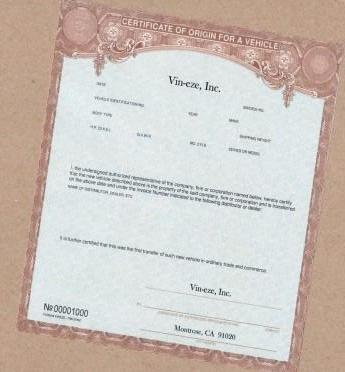
Print Certification Labels & Msos
Calculates Check Digit
Print Labels for Canada & NVIS
Share Vin-eze with other computers
Remote Support
888.247.7627 www.vineze.com
